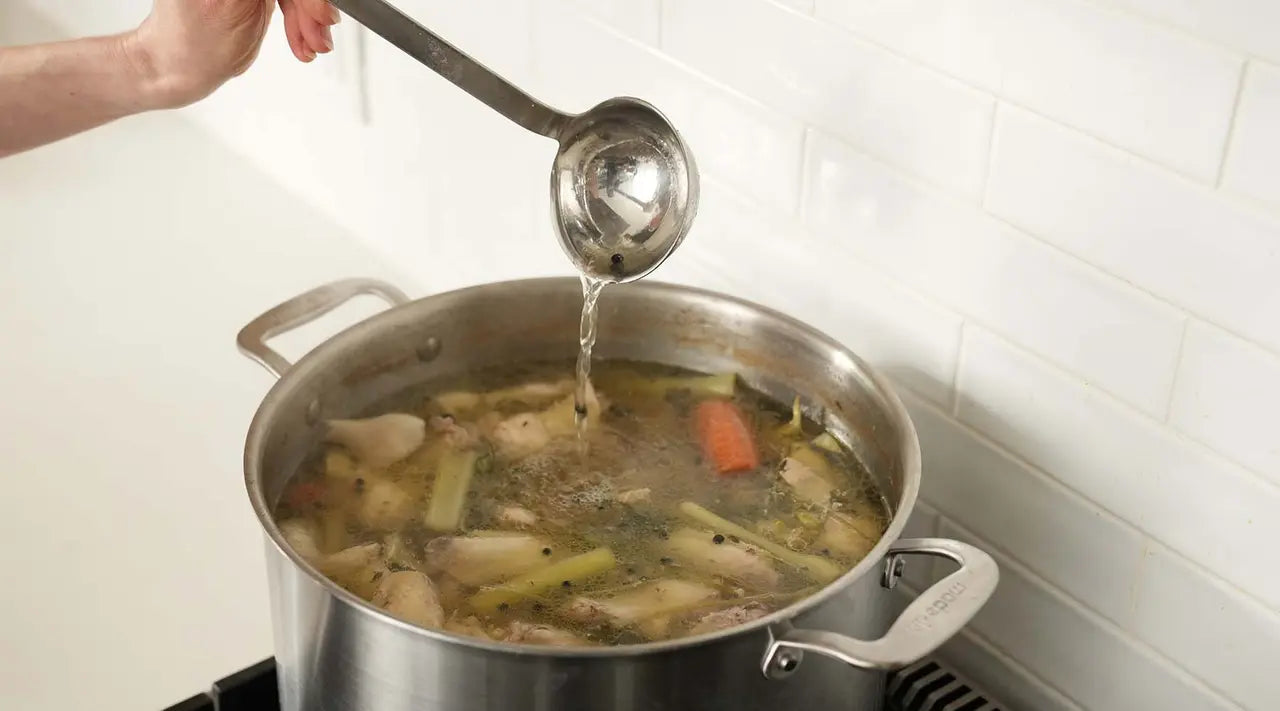The culinary world thrives on tools that enhance both the efficiency and the experience of cooking. One of these essential tools is the stock pot. This article will unravel the multifaceted function of a stock pot, its significance in a professional kitchen, and delve into the various techniques that can be employed to maximize its potential. Recognizing what a stock pot can offer is crucial for kitchen professionals aiming to prepare delicious and hearty meals.
Stock pots come in various sizes, generally ranging from 6 to 20 quarts, and are typically made from stainless steel, aluminum, or even ceramic. But the question remains: what is the true function of a stock pot? The stock pot is not merely a large cooking vessel; its design serves specific purposes that elevate the art of cooking.

1. Understanding the Design of a Stock Pot
To grasp the function of a stock pot, one must first appreciate its design. Stock pots are characterized by their tall sides, wide opening, and sturdy base. This unique construction facilitates an even heat distribution, crucial for cooking stocks, broths, and soups.
Moreover, the lid that typically accompanies a stock pot plays an essential role in retaining moisture and flavors while cooking. This not only hastens the cooking process but also ensures that the end product is rich and flavorful.

2. Functions of a Stock Pot in Professional Cooking
The stock pot serves numerous purposes in a professional kitchen. Some of these functions include:
a. Making Stocks and Broths
The primary function of a stock pot is to prepare high-quality stocks and broths. The tall sides allow for a large quantity of liquid, while the wide base provides enough surface area for the ingredients. Ingredients like bones, vegetables, and herbs simmer together over several hours, releasing their flavors and nutrition into the liquid.
For tips on making stocks, check out this great resource: How to Make Turkey Stock.
b. Cooking Soups and Stews
As the name implies, a stock pot is ideal for making a variety of soups and stews. The ample capacity allows for cooking larger batches, making it easier to serve a crowd or prepare meals for the week.
For delicious soup ideas, you may want to browse Crock Pot Soup Recipes.
c. Boiling Pasta and Vegetables
A stock pot is also excellent for boiling pasta and vegetables. The deep sides are perfect for boiling large volumes of water, which is essential for cooking pasta without it sticking together.
For related cooking techniques, see What to Cook in a Stock Pot.d. Preparing Large Quantities
In a professional kitchen, the ability to prepare large quantities efficiently is paramount. A stock pot allows chefs to prepare enough ingredients for several meals or an event. Whether it's for cooking chili for a large gathering or stock for the week, the stock pot is indispensable.

3. Essential Tips for Using a Stock Pot
Leveraging the full potential of a stock pot requires skill and knowledge. Here are some essential tips:
a. Layer Your Ingredients
When preparing stocks or soups, be sure to layer your ingredients. Start with the hardier items at the bottom, such as bones or root vegetables, and then add more delicate items like herbs or softer vegetables later in the cooking process.
b. Maintain Consistent Heat
To avoid bitterness or a cloudy stock, maintain a consistent low and slow simmer. This will enable all flavors to meld beautifully over time.
c. Use Quality Ingredients
The final flavor of any dish cooked in a stock pot is determined by the quality of your ingredients. Always opt for the freshest produce, herbs, and premium meat for stock production.

4. Common Misconceptions Regarding Stock Pots
Many misconceptions exist around the use of stock pots. Here are a few that deserve to be debunked:
a. Stock Pots are Only for Stocks
Though the name suggests this, stock pots are versatile enough to prepare soups, stews, pasta, and more. They should not be relegated to a single function.
b. All Stock Pots are Created Equal
There are quality differences between stock pots. Investing in a high-quality, heavy-bottomed pot will yield better results due to improved heat diffusion.
5. Conclusion
In conclusion, the function of a stock pot extends far beyond its name. Its multipurpose design makes it a staple in any professional kitchen. Understanding and maximizing the use of this invaluable tool can significantly streamline cooking processes and enhance the flavors of dishes prepared. Whether making stocks, soups, or boiling essentials, every chef should appreciate the broad possibilities a stock pot brings to their culinary repertoire.
For more insights into stock pots and their uses, feel free to check out How to Use a Stock Pot and How Many Quarts in a Stock Pot.
As an Amazon Associate, I earn from qualifying purchases.






Leave a comment
This site is protected by hCaptcha and the hCaptcha Privacy Policy and Terms of Service apply.